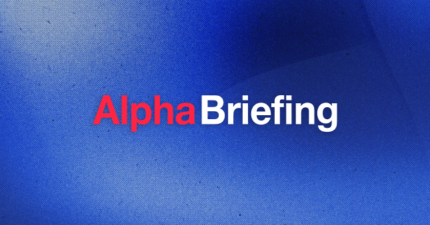The Role of Tokenization in the World of Digital Assets
Most countries identify cryptocurrencies as tangible assets, but Bitcoin (BTC) and Ethereum (ETH)—the two largest cryptocurrencies by market cap—are classified as a store of value. This means that Bitcoin and Ethereum are units of exchange in themselves.
But is it possible to convert physical assets, like real estate and gold, and even intangible assets (intellectual property and company shares) into digital assets like Bitcoin?
The short answer is yes. Early on, cryptocurrencies took shape and eventually became heralded as real-world assets. Over time, financial institutions, investors, and central governments began to explore the design of blockchain, realizing they could digitize any asset class and create tokens— a process called tokenization.
In this guide, we’ll explain what tokenization is and why it’s important in the crypto industry.
What Is Tokenization?
Tokenization is the process of issuing a token or digital representation of an asset through cryptography. Generally speaking, the goal of tokenization is to store an asset on a blockchain network. Assets such as art, real estate, stocks, equities, and even sensitive information can be tokenized on a blockchain.
When that happens, users can receive tokens that display a piece or all of the asset’s inherent value. Tokenization can be used to create a wide array of different tokens. The most common types of tokens are:
- Stablecoins: This is essentially a cryptocurrency whose value is connected to another financial instrument. A stablecoin can be derived from commodities, fiat money, and even other cryptocurrencies.
- Non-fungible tokens (NFTs): This is a unique digital identifier that showcases ownership of a financial asset. NFTs can be based on anything digital, such as music and art.
As you can see, tokenization is an essential process in the crypto industry. In fact, experts predict that tokenization will lead to the development of up to $5 trillion in digital securities by 2030.
How Tokenization Works
The tokenization process is surprisingly straightforward. During this process, an asset’s sensitive data element (like a credit card number or primary account number) is replaced by a non-sensitive substitute by machine learning and algorithms. The result is a token—an arbitrary data string with no clear structure or meaning.
Through asset tokenization, the token and the original data asset bear no resemblance to each other. This makes it difficult for hackers to compromise the token. Once a token is created, it’s simply a vehicle for movement of its original values.
Randomly generated tokens can be transferred, stored, and verified safely and efficiently. Tokens are commonly used in public blockchains like Bitcoin. However, they’re not required in private blockchain networks since they are centralized and owned by a central authority.
For example, let’s say that you wanted to tokenize a new piece of art. By creating an NFT, you can provide pieces of ownership to investors over a secure blockchain network. What’s more, your NFT is non-fungible. This means that your cryptographic stake of ownership can’t be replaced with something else, like Bitcoin or another digital asset.
AlphaPoints’ Key Tokenization Features
Asset tokenization may be a straightforward process, but to do it, you’ll need extensive blockchain knowledge and an understanding of how smart contracts work. Here’s how AlphaPoint can do the heavy lifting for you.
- Asset digitization: With AlphaPoint, customers can digitize their assets and create smart contracts that represent ownership of those assets.
- Token issuance: AlphaPoint makes it possible for businesses to issue tokens and manage their token economies from an easy-to-use platform. Tokens are stored and issued from a token vault.
- Market launch: AlphaPoint helps businesses launch secondary markets for their tokens and conveniently monitor them all.
- Compliance: AlphaPoint makes it simple for customers to comply with all applicable data protection regulations, like payment card industry data security (PCI DSS), related to payment tokenization and securities offerings in their region.
Step-by-Step Guide for Tokenizing Assets
To help you get started, here’s a rundown of how tokenization works:
- Asset selection and evaluation. The first step to creating a token is determining what asset you’ll be using as its framework. Your choices are endless—you can choose between tangible (real estate, fiat money, and artwork) and intangible (stocks, bonds, and commodities) assets.
- Selection of a suitable blockchain platform. Next, you’ll need to select which blockchain platform you want to use to begin the tokenization process. There are several you can choose from, including Ethereum, IBM blockchain, Tron, and Corda.
- Drafting of the necessary smart contracts. Smart contracts are programs that operate on the blockchain network. They automate most of the network’s functions, including issuing tokens and handling authentication. Drafting a smart contract requires extensive coding knowledge. Most are written on Ethereum using the Solidity programming language.
- Issuing and distributing the tokens. Based on the smart contact you’ve created, you’ll need to develop a framework for generating and issuing security tokens, as well as real-time payment processing to bank accounts.
- Maintaining compliance and necessary regulations. The nature of digital tokens is always changing, and so are both local and worldwide regulations. Make sure you are up-to-speed with the compliance standards in your token’s industry.
Benefits of Tokenization
Tokenization provides a wide range of benefits for financial institutions and investors. Below, we’ll cover several of these advantages.
Increased Liquidity
Investors can trade tokenized assets on decentralized exchanges (DEXs), which provides greater liquidity. This is especially beneficial for illiquid assets, such as real estate and private equity.
Tokenizing a physical asset can make it more available on DEXs and increase market orders, which can drive up liquidity. Investors wanting to sell off illiquid assets gain a forum to match with buyers at a faster pace.
Ultimately, the digital nature of tokens can elevate the utility of traditional assets, whether they’re tangible or not.
Reduced Costs
Tokenization can reduce the costs associated with asset ownership and transfer because it allows assets to be transferred without the need for intermediaries, such as lawyers or custodians.
For example, let’s say that you want to transfer ownership of a piece of real estate in Spain. Without tokenization, you would have to navigate the traditional process of hiring a lawyer and processing tons of paperwork to complete the transaction.
Via tokenization, this process becomes as simple as transferring the tokens to the buyer.
Improved Transparency and Security
Tokenized assets are recorded on a blockchain, which provides a transparent and secure record of ownership. This can help reduce fraud and eliminate possible data breaches, which can improve investor confidence.
Because tokenized assets are recorded over a public blockchain network, it’s possible for someone to audit these transactions and check for instances of fraud. Ultimately, tokenization gives investors peace of mind.
Increased Fractional Ownership
Tokenization allows investors to purchase fractional ownership of assets, which was previously impossible. This allows more people to invest in high-value assets, such as real estate and artwork.
A common example of this is NFTs. Previously, only one person could own a single piece of artwork. They couldn’t realistically give fractional shares of their artwork since art is a tangible asset. But nowadays, NFTs make it possible for multiple people to invest in a single piece of art or music.
Programmability
Smart contracts are incredibly versatile, and you can use them to program tokenized assets with specific rules and conditions and automate tasks, such as dividend payments and asset transfers.
You can use smart contracts to automate your token’s core operations and even create the frameworks for secondary markets. However, it takes a great amount of coding knowledge to create a functional and secure smart contract.
Partnering with AlphaPoint makes it convenient to deploy ready-made smart contracts for your tokens.
Use Cases for Tokenization in Blockchain
Tokenization offers a wide range of use cases for financial institutions and investors. The most common tokenization uses are:
Real Estate
You can use tokenization to fractionalize and trade real estate assets, making it easier for investors to participate in the market. For example, a commercial property could be tokenized and sold to multiple investors, each of whom would own a proportional share of the property.
Real estate tends to be an illiquid asset because it takes a great deal of time for owners to get a profit from a sale. Tokenization can ease this burden and make real estate assets more liquid and attractive for incoming buyers.
Securities
Tokens can represent ownership of securities, such as stocks, bonds, and mutual funds. This can make it easier to trade securities and raise capital for new projects.
Through tokenization, securities move on a blockchain network, making it possible to buy shares in a real estate investment trust (REIT) through a brokerage.
Art and Collectibles
Tokens can represent ownership of digital and physical art, collectibles, and other unique assets. This can help to reduce fraud and counterfeiting, and it can also make it easier to trade these assets.
NFTs are the most common stake of ownership for arts and collectibles. Since tokens are unique digital identifiers, investors can be confident about buying and storing their assets.
Intellectual Property
Tokens can also represent ownership of intellectual property, such as patents, trademarks, and copyrights. This can make it easier to license and trade intellectual property assets.
This type of transaction is highly relevant in the Web3 ecosystem. New projects can easily transfer ownership with secure and convenient tokens.
Supply Chain Management
Tokenization can help track the movement of goods and materials through a supply chain, improving efficiency and transparency and reducing fraud.
All token-related transactions are recorded over the blockchain network, which makes it easy for anyone to track movement across a supply chain cycle and promote accountability.
Tokenize Your Assets With Alphapoint
Overall, tokenization is an essential process in the crypto space. It helps investors digitize virtually any asset for consumption or transaction. But if you want to tokenize your assets, you don’t have to do the hard work yourself.
A white-label service provider like AlphaPoint can provide you with the tools you need to streamline the entire process. With AlphaPoint, you can tokenize your assets conveniently using our cutting-edge tokenization technology.
Request a demo today to get started.
To access this resource, please provide a little info.
Complete the form below to view the document.


